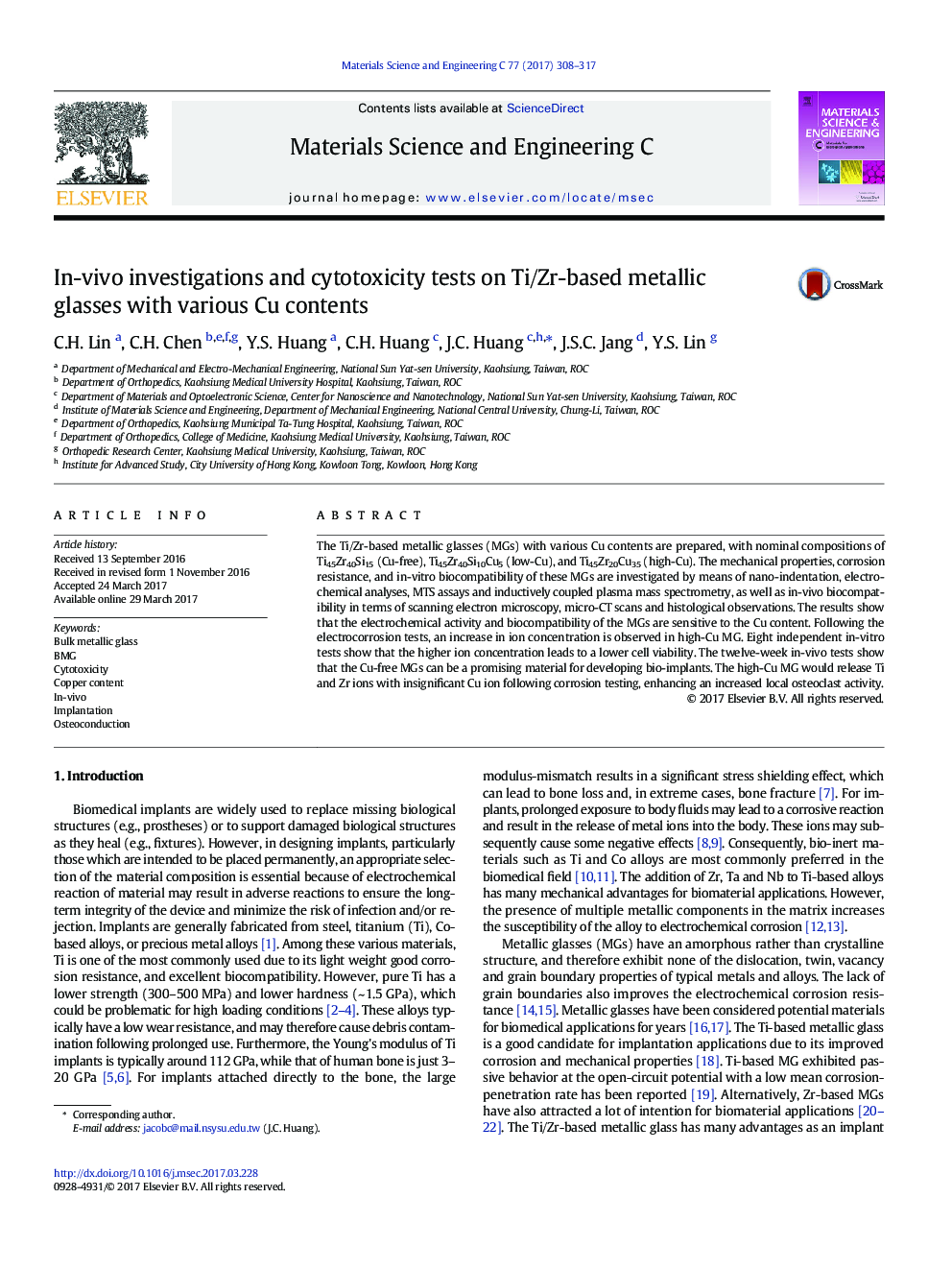| Article ID | Journal | Published Year | Pages | File Type |
|---|---|---|---|---|
| 5434527 | Materials Science and Engineering: C | 2017 | 10 Pages |
â¢In-vitro and in-vivo investigations are done on three Ti-based MGs with different Cu contents.â¢The no-Cu and low-Cu MGs show excellent corrosion resistance and low cytotoxicity.â¢The Cu-free Ti45Zr40Si15 MG has good potential as implantable biomaterials.
The Ti/Zr-based metallic glasses (MGs) with various Cu contents are prepared, with nominal compositions of Ti45Zr40Si15 (Cu-free), Ti45Zr40Si10Cu5 (low-Cu), and Ti45Zr20Cu35 (high-Cu). The mechanical properties, corrosion resistance, and in-vitro biocompatibility of these MGs are investigated by means of nano-indentation, electrochemical analyses, MTS assays and inductively coupled plasma mass spectrometry, as well as in-vivo biocompatibility in terms of scanning electron microscopy, micro-CT scans and histological observations. The results show that the electrochemical activity and biocompatibility of the MGs are sensitive to the Cu content. Following the electrocorrosion tests, an increase in ion concentration is observed in high-Cu MG. Eight independent in-vitro tests show that the higher ion concentration leads to a lower cell viability. The twelve-week in-vivo tests show that the Cu-free MGs can be a promising material for developing bio-implants. The high-Cu MG would release Ti and Zr ions with insignificant Cu ion following corrosion testing, enhancing an increased local osteoclast activity.
